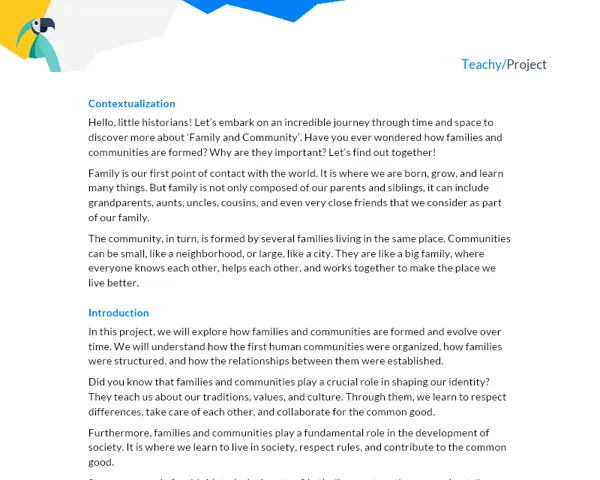Contextualization
Hello, young time explorers! Our journey through the tunnel of History takes us to a crucial moment in humanity: the transition from nomadism to sedentarism. This occurred approximately 10,000 years ago, in the period we call the Neolithic. And why is it so important? Well, it is in this period that we see the emergence of the first cities and agriculture, fundamental milestones for the development of humanity.
At first, our ancestors were nomads, which means they did not have a fixed residence. They lived off hunting, fishing, and gathering fruits and roots. However, over time, they realized they could control the environment and decided to start planting and raising animals. This, my young friends, was the birth of agriculture, one of humanity's greatest inventions.
Introduction
Now, let's understand how this happened. Our ancestors lived in small groups, usually composed of about 20 to 30 people. They moved from place to place in search of food. But over time, they began to notice that some plants grew where they left food scraps. They realized that if they intentionally planted these seeds, they could have a constant source of food.
So, instead of following the food, our ancestors started bringing the food to them. They learned to cultivate plants and raise animals. And the most interesting thing is that, over time, they became so good at it that they produced more than they needed to survive. This allowed them to settle in one place, giving rise to the first cities.
Now, you must be wondering: what is the importance of this for humanity? Well, agriculture and sedentarism allowed our ancestors to develop several things that were not possible before, such as the creation of more advanced tools, the development of techniques for building houses, and the emergence of trade. All of this contributed to the advancement of our species and the creation of societies as we know them today.
Practical Activity: 'Neolithic Archaeologists'
Project Objective
In this activity, you will become true archaeologists of time, studying and recreating the transition from nomadism to sedentarism in the Neolithic period. The goal is to understand in a practical way how agriculture and the formation of the first cities changed the lives of our ancestors.
Detailed Project Description
You will work in groups to create a 'Neolithic Archaeological Site.' Each group will be responsible for researching, planning, and building a miniature of a Neolithic city, including houses, crop fields, and animals. You will also represent the nomads who settled in this city and started practicing agriculture.
Required Materials
- Large cardboard or styrofoam board
- Clay or modeling clay
- Paints and brushes
- Plants, seeds, and small artificial flowers
- Toothpicks or barbecue skewers
- Felt or fabric of various colors
- Glue and scissors
- Magazines, books, and internet for research
Step by Step
-
Research: Initially, each group should research life in the Neolithic, including what the houses were like, how agriculture was practiced, and what animals were raised.
-
Planning: After the research, the groups should plan how their Archaeological Site will be. Draw the city on paper, identifying where the houses, crop fields, and animal areas will be.
-
Construction: Now it's time to build! Use the cardboard or styrofoam to create the base of the city and the clay or modeling clay to make the houses, crop fields, and animals. Use the paints to decorate the houses and crop fields.
-
Representation: Once the city is ready, represent the nomads who settled in it. Use the felt or fabric to create clothes and accessories for the nomads. Don't forget to also represent the animals!
-
Presentation: Finally, each group will present their Neolithic Archaeological Site to the class, explaining what they learned about life in the Neolithic and how the transition from nomadism to sedentarism changed the lives of our ancestors.
Remember, the most important thing is to have fun and learn together! All groups have the same mission, so don't be afraid to share ideas and help each other. Good work, archaeologists!


